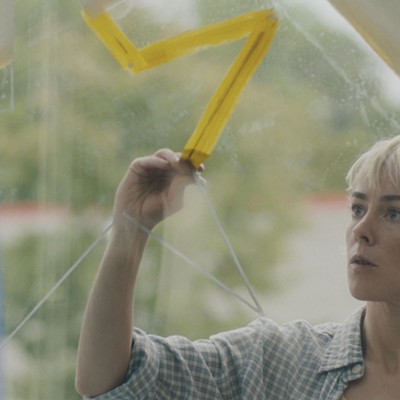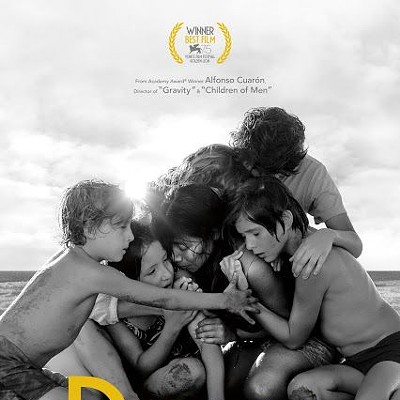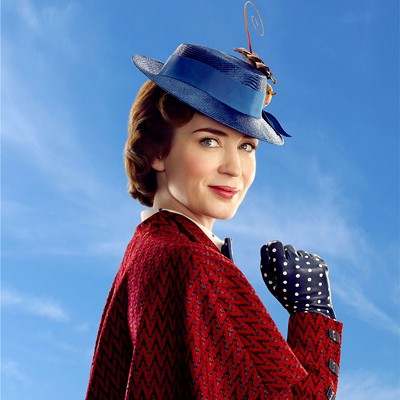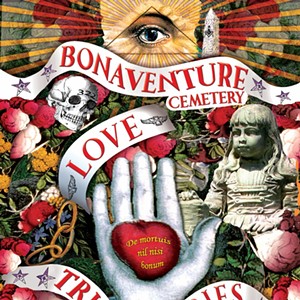Hancock
The idea behind Robert Frost’s soul-stirring poem “The Road Not Taken” can be applied to Hancock, a summer sci-fi outing that, somewhat surprisingly, ends up taking the path “less traveled by.” Yet equally surprising is the fact that this enjoyable film would have been even better had it played out as expected. The premise is irresistible, a counterpoint to all the more serious-minded superhero flicks that have been invading multiplexes in recent years. Hancock (played by Will Smith) is an alcoholic, antisocial superhero whose crimefighting exploits usually end up causing millions of dollars in damage to the city of Los Angeles). The residents have had enough of him, and the police even have a warrant out for his arrest. Hancock couldn’t care less until the day he meets -- and saves the life of -- public relations guy Ray Embrey (Jason Bateman). The sensitive and progressive Ray decides that he’s going to help Hancock overhaul his public image, transforming him from a menace to society into a hero worthy of love and respect. Ray’s wife Mary (Charlize Theron), however, thinks that it’s a waste of time, and that Hancock will never be able to straighten himself out. The first half sprints with this plotline, resulting in a movie that’s consistently funny and inventive. But without warning, scripters Vincent Ngo and Vince Gilligan orchestrate a major plot pirouette, one that dramatically changes the relationships between the characters and allows a sharp satire to mutate into a melodrama, a romance, a tragedy, and a myth-building muddle that might remind some viewers of titles like Highlander or Kate & Leopold.
WALL-E
The dialogue of the title robot mostly consists of beeps and chirps and the occasional electronically altered word -- just get Jim Carrey or Bruce Willis for one day’s work, right? Well, except that even here, Pixar suits followed their own instincts instead of the bottom line. It thrilled me to no end to learn that they settled on Ben Burtt, the multi-Oscar-winning sound designer responsible for creating the creature effects heard in 1977’s Star Wars (yes, including R2-D2). What’s even more gratifying is that Burtt’s shining moment is at the center of a worthy motion picture, a delightful film that so far earns the crown as this summer’s best release. Ultimately WALL-E is about nothing less than one of the tenets of human existence: the need to find a partner with whom to share life’s experiences. Of course, the switch here is that it’s a robot, not a human, who’s in need of companionship. WALL-E is the last of his type, a Waste Allocation Load Lifter Earth-class robot who rumbles around a deserted Earth collecting and compressing trash. All of the human inhabitants has long since abandoned the polluted planet to take up residence in a gargantuan spaceship (named Axiom) light years away, and what’s left down here is a wasteland seemingly unable to sustain any form of life. For his part, WALL-E carries on his prime directive of cleaning up, yet he’s developed enough human-like traits to know what he likes. And what he likes is collecting interesting knickknacks (like a Rubik’s cube, a spork and lighters -- lots of lighters) and watching an old videocassette of Hello, Dolly! The musical teaches him about the concept of love, so when a sleek robot named EVE (Extra-terrestrial Vegetation Evaluator) is dropped off on the planet to search for signs that it might be inhabitable again, WALL-E pursues her. Initially, EVE is all-business, but she eventually warms to his considerable charms, and once she’s ferried back to Axiom, our intrepid little Romeo determines not to let her get away.
Get Smart
Get Smart, the now-cult TV sitcom that aired from 1965 to 1970, was created by Mel Brooks and Buck Henry, and these legendary funnymen are listed in the credits of the new motion picture spinoff Get Smart as “creative consultants.” The word is that neither of them actually had any input in what turns up on the screen, which probably explains why major facets of this motion picture differ from what fans fondly recall about the show. But in at least one respect, there’s a striking similarity: Both have no problem providing the laughs. This new version does away with the Cold War backdrop. Instead, the well-worn plot finds K.A.O.S. head Siegfried (Terence Stamp, taking over Bernie Kopell’s role from the series) threatening to destroy the world unless he gets paid a substantial sum, and the movie seems as much a Bond spoof as a Get Smart homage. Carell, whose Maxwell Smart is (slightly) more intelligent than Don Adams’, and Hathaway are well-paired, and there are choice supporting stints by Alan Arkin as The Chief and Dwayne “The Rock” Johnson as the macho Agent 23. In between all the gags and all the action scenes, there’s an identifiable human element at work, and this empathy prevents this from becoming just another big, dumb summer comedy.
The Love Guru
If I had ever entertained the notion that Mike Myers would make another movie as awful as The Cat In the Hat, I might have opted for early retirement. Yet here comes The Love Guru. Myers, who also co-wrote (with Graham Gordy) what we’ll loosely refer to as the screenplay, stars as Guru Pitka, an American-born, Indian-raised spiritual leader who’s miffed that he places second to Deepak Chopra when it comes to the popularity of self-help gurus. As children, both Pitka and Chopra were taught by -- say it fast to get the “joke” -- Guru Tugginmypudha, who trains his young charges by urinating in a bucket and then making his pupils fight each other with piss-saturated mops. Tugginmypudha is played by none other than Ben Kingsley, who 25 years ago won an Oscar for playing Mahatma Gandhi. Pitka is given a golden opportunity to pass Chopra in mass appeal when he’s hired by Toronto Maple Leafs owner Jane Bullard (Jessica Alba, and you know you’re in trouble when she’s one of the more tolerable aspects of a movie) to patch matters up between the hockey team’s star player, Darren Roanoke (Romany Malco), and his estranged wife Prudence (Meagan Good), who lately has been stepping out with the enormously endowed Los Angeles Kings goalie Jacques “Le Coq” Grande (Justin Timberlake). And yes, every time Le Coq pulls out le cock, we predictably hear a thud as it hits the floor.
WANTED
Based on the graphic novel series, Wanted initially feels like an unofficial remake of Fight Club, as cubicle nobody Wesley Gibson (James McAvoy, speaking of Atonement) narrates how he’s been beaten down by his mundane, miserable existence (cheating girlfriend, obnoxious boss, dead-end job). Into his life walks not Tyler Durden but Fox (Angelina Jolie), a tattooed beauty who insists that he’s been targeted for elimination by the same man (Thomas Kretschmann) who recently killed his father. Fox soon introduces Wesley to The Fraternity, a clandestine outfit led by the cordial Sloan (Morgan Freeman). Shucking aside any moral qualms, Wesley joins the group, in the process learning that he possesses untapped skills that make him a natural for this line of work. Russian director Timur Bekmambetov, best known for the visually striking yet dramatically inert Nochnoi Dozor (Night Watch) and its sequels, has crafted a slam-bang feature that revels in its own ridiculousness.
You Don't Mess With the Zohan
It was Mae West who famously quipped (in 1933’s I’m No Angel), “When I’m good, I’m very, very good, but when I’m bad, I’m better.” You Don’t Mess With the Zohan inspires a bastardization of that quote: When it’s funny, it’s very, very funny, but when it’s bad, it’s downright awful. That’s a shame, because choice moments suggest that this could have been Adam Sandler’s best comedy -- not a Herculean feat, by any means, but after a career littered by the likes of Big Daddy, Little Nicky and the dismal remake of The Longest Yard, we’ll take what we can get. Penning the script with Robert Smigel and omniscient “It” guy Judd Apatow, Sandler, whose newly buff frame and stylish facial hair prove to be a good look for him, plays Zohan, an Israeli antiterrorist agent who tires of his violent lot in life. While battling his arch-nemesis, the Palestinian warrior The Phantom (John Turturro), Zohan fakes his own death and moves to New York to pursue his dream of becoming a hair stylist.
KUNG FU PANDA
It isn’t obnoxious. It isn’t without heart or soul. It isn’t packed to the rafters with potty humor. In short, it isn’t like the majority of today’s non-Pixar animated features. It’s important not to oversell the picture, because it’s still a formulaic family film featuring the usual type of underachiever who invariably headlines toon romps of this nature. But in other ways, it’s a delight, wrapping its familiar messages of acceptance and self-confidence in the middle of a provocative visual scheme. Jack Black employs his patented shtick as an overweight panda who longs to become a martial arts expert, but it suits this story just fine. As the vicious snow leopard who seeks to claim the high-and-mighty title of Dragon Warrior, Deadwood’s Ian McShane effectively provides guttural menace. And while the actors who provide the voices for the legendary martial arts outfit The Furious Five aren’t given enough to do (Angelina Jolie, Seth Rogen, David Cross, Lucy Liu and poor Jackie Chan are the victims), all is forgiven whenever Master Shifu appears on screen. It’s a sizable part, meaning that we’re constantly treated to Dustin Hoffman’s quirky take on the role of a diminutive red panda who serves as mentor to the other animals.
Sex and the City
Based on the book by Candace Bushnell, the HBO series cannily focused on four New Yorkers who ideally represented different types of women: inquisitive Carrie (Sarah Jessica Parker), perpetually horny Samantha (Kim Cattrall), brainy, brittle Miranda (Cynthia Nixon) and reserved, constantly upbeat Charlotte (Kristin Davis). The show ended with the characters either married or in settled relationships, and the movie picks up several years after that point. That has changed the dynamic of the product, since the fun of watching these four single gals whoop it up in the Big Apple has by necessity been curtailed to focus on their triumphs and travails as attached women. Thus, Carrie is preoccupied with her upcoming marriage to longtime beau Mr. Big (Chris Roth); Samantha valiantly resists the call of the penis as she struggles to remain faithful to her hunky if unavailable boyfriend Jerry (Jason Lewis); Miranda contends with issues of infidelity as they relate to her husband Steve (David Eigenberg); and Charlotte is content with life with hubbie Harry (Evan Handler) and their adopted daughter.
Indiana Jones and the Kingdom of the Crystal Skull
It’s now 1957, and World War II has since been replaced by the Cold War, meaning our intrepid archeologist-professor-swashbuckler now has his hands full battling Commies instead of Nazis. The Russians, led by a slinky ball of black-haired menace named Irina Spalko (Cate Blanchett), need Indy’s cooperation in helping them obtain an object -- a crystal skull, of course -- that will aid them in their quest for world domination. Indie’s journey to thwart them reunites him with Marion Ravenwood (three cheers for the return of Raiders’ Karen Allen) and also allows him to share adventures with a brash young greaser (Shia LaBeouf) and a loony old professor (John Hurt). Longtime fans will find the references to past films delightful and they’ll similarly be pleased to find Spielberg once again at his most limber. The first two-thirds of the film are such a blast that it makes the final section feel even more like a downer than it would under other circumstances. The plot in each of the first three pictures was convoluted, but all the disparate elements eventually coalesced. By the time we get to the climax here, we demand something truly marvelous, but all we get is a fairly lackluster finale that shamelessly borrows pieces from the Raiders and Last Crusade endings. Equally disappointing is the realization that the film showcases paper villains not worthy of Indy’s time: Even Blanchett’s Irina Spalko is fairly dry, lacking the suave menace of Paul Freeman’s Belloq (from Raiders) or the slimy sadism of Ronald Lacey’s Major Toht (ditto). But Indiana Jones and the Kingdom of the Crystal Skull is really about one character, the man who, to borrow the auto slogan, is Built Ford Tough. It’s been 11 years since the superstar has appeared in a movie that entertained (Air Force One), and it’s been depressing watching him fritter away a once-illustrious career in garbage like Hollywood Homicide and Firewall. Here, though, the 65-year-old actor again dons the role that fits him like a glove, and his enthusiasm and athleticism (as always, he performed many of his own stunts) serve to further fuel our own glee for the project.

























